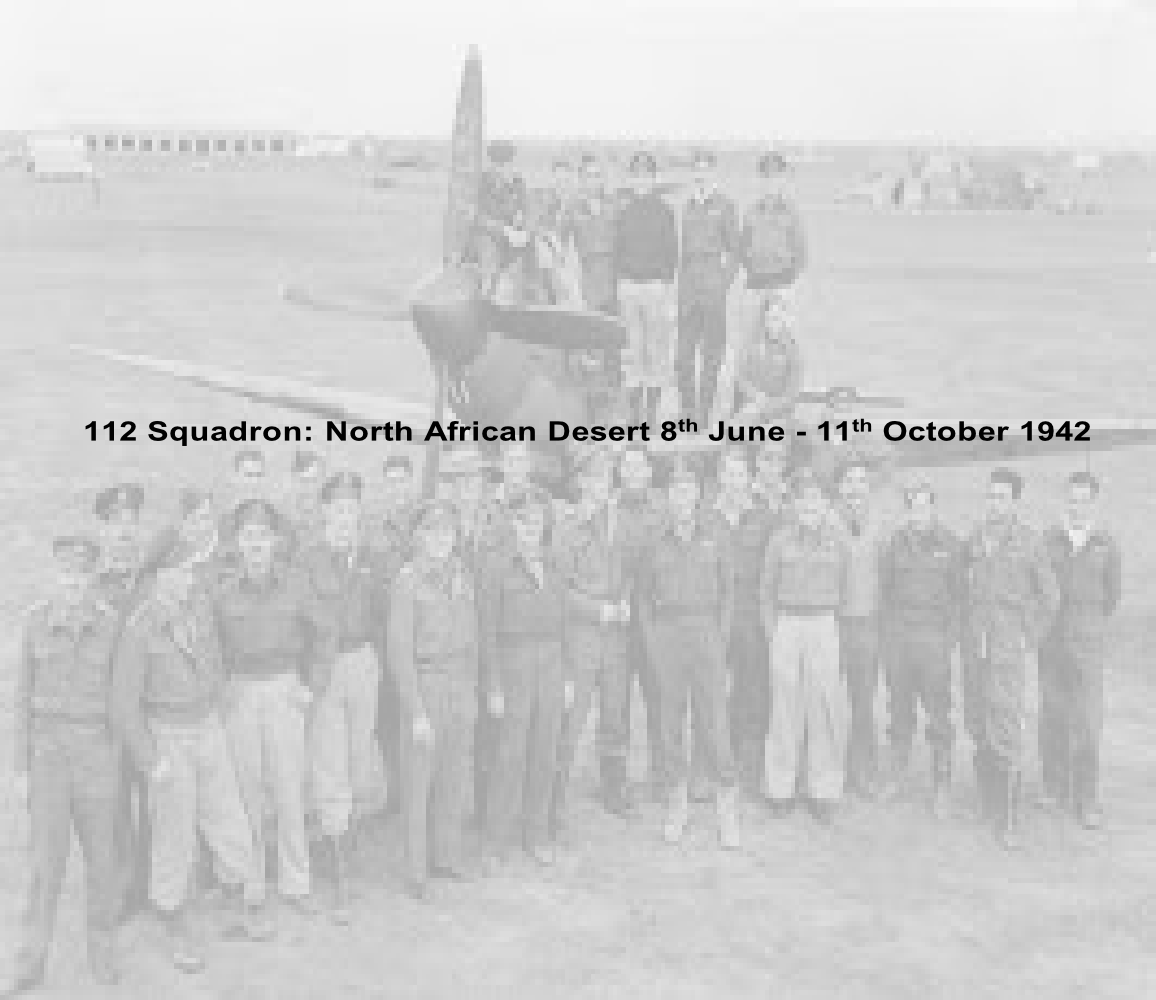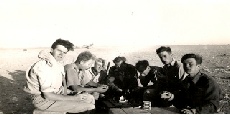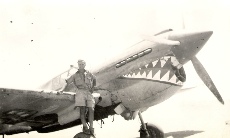








Summer 1942: left-

Sept 1942. Captioned by Desmond "Morrison with my kite", this is New Zealander Sergeant
J. H. Morrison (service no. 41144) in front of Desmond's P-















Before joining his new squadron Desmond first attended the Desert Air Force Training
Flight on the 8th June to learn to fly the Curtis P-
Desmond began o.p.s on the 20th of June and was quickly averaging 4 sorties a day
on bomber escort and ground attack duties. On the 4th of July, Desmond claimed his
first enemy destroyed-
During a raid against LG21 on the morning of the 5th, Desmond dropped a bomb amongst
aircraft parked in the dispersal area, turned away and descended to very low level
to strafe a line of trucks but the enemy gunners hit his Kittyhawk. He force-
Desmond was promoted to Pilot Officer by Squadron Leader Billy Drake on the 1st
of August who described him as “One of my best pilots, a delightful man and sound
as a rock. He could always be relied upon to do what he was told and do it well -
While leading a section on patrol on the 30th August. Desmond and his colleagues encountered 15x ME109s and Italian MC202s which, despite being outnumbered in the dogfight, he described as the best combat he had experienced.
On the 3rd of Sept. Desmond led one of two sections of 4 Kittyhawks. At 11.15am they saw eleven 109s of II/27. Desmond again led his section in to the attack and got a 109F but was hit and again lucky to emerge unscathed. He left 112 Squadron on the 12th of October to join 601 Squadron and fly Spitfires again, a move that would ultimately establish his reputation as a fighter ace and one of the RAF’s best pilots.